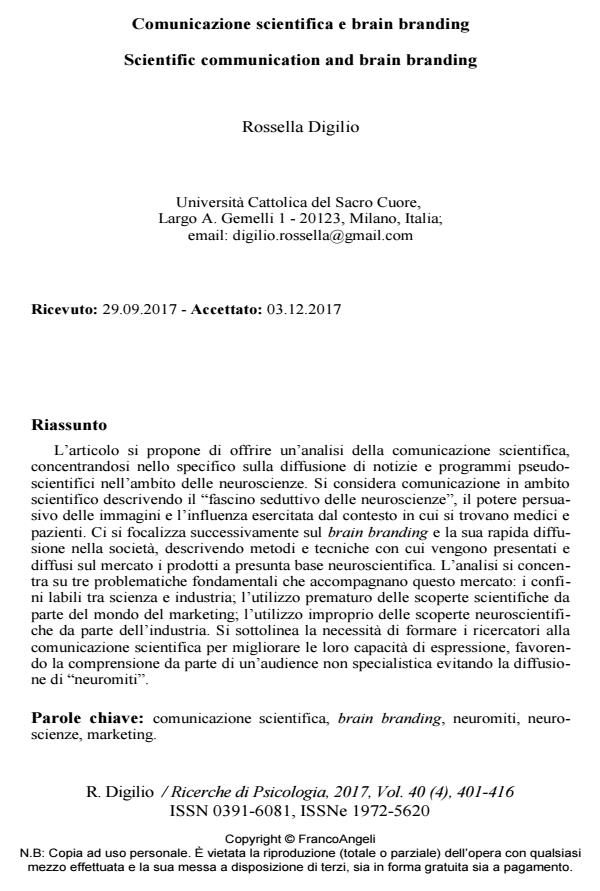Scientific communication and brain branding
Journal title RICERCHE DI PSICOLOGIA
Author/s Rossella Digilio
Publishing Year 2017 Issue 2017/4
Language Italian Pages 16 P. 401-416 File size 206 KB
DOI 10.3280/RIP2017-004002
DOI is like a bar code for intellectual property: to have more infomation
click here
Below, you can see the article first page
If you want to buy this article in PDF format, you can do it, following the instructions to buy download credits

FrancoAngeli is member of Publishers International Linking Association, Inc (PILA), a not-for-profit association which run the CrossRef service enabling links to and from online scholarly content.
The paper analyses scientific communication, focusing on pseudo-scientific news and programs in the field of neurosciences. Scientific communication, describing the seductive allure of neuroscience, the persuasive power of pictures, and the influence of the context in which many physicians and patients find themselves are taken into consideration. Then the analysis focused on three concerns about brain branding: the insidious effects of blurred boundaries between science and industry; the premature use of scientific findings; the misuse of neuroscience in marketing. The need to train scientists to scientific communication in stressed so to improve their capacity to be clearly understood by the audience, without spreading neuromythologies.
Keywords: Scientific communication, brain branding, neuromyths, neuroscience, marketing.
- Neurodidactics of Languages: Neuromyths in Multilingual Learners Antonia Navarro Rincón, María José Carrillo López, César Augusto Solano Galvis, Laura Isla Navarro, in Mathematics /2022 pp.196
DOI: 10.3390/math10020196
Rossella Digilio, Comunicazione scientifica e brain branding in "RICERCHE DI PSICOLOGIA " 4/2017, pp 401-416, DOI: 10.3280/RIP2017-004002